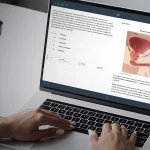Telemedicine, part of the broader telehealth industry, is a rapidly growing branch of medical care in the United States. Polaris Market Research estimates that the telemedicine market value increased from $30.29 billion in 2023 to $35.63 billion in 2024. They expect the market to grow to a whopping $131.49 billion by 2032.[1] Multiple research organizations project similar growth. So, what does this mean for you as a physician assistant?
Telemedicine Market Value Growth

Benefits of Telemedicine PA Jobs
The job outlook for physician assistants in general is very good, with projected growth of 28% from 2023 to 2033.[2] Pairing this with the rapid growth of telemedicine, PAs will have plenty of opportunities to practice in-person or remotely for the foreseeable future. This comes with a number of benefits for you and your patients:
Common Challenges for PAs in Telemedicine
Telemedicine does have its shortcomings. For physician assistants, this is largely due to difficulties with technology. It’s not enough for you to understand your systems and procedures. Your patients need to understand them, as well. There are also general challenges with working remotely in medical settings. For example:
- You will not be able to perform physical evaluations.
- Internet connection issues can arise for you or your patients.
- Picture and video quality can make diagnoses more difficult.
- It’s harder to build a relationship and trust with your patients.
Battling technical difficulties and less personable patient interactions are perhaps the most difficult aspects on the operational side. There’s also the matter of licensure requirements to practice telemedicine.
Telemedicine Licensure Requirements for PAs
To practice as a physician assistant, in telemedicine or otherwise, you must be properly licensed or authorized to practice in the state in which your patient is located.[3] This involves completing an accredited physician assistant program, passing the PANCE, and meeting your jurisdiction’s licensure requirements.
While many states offered relaxed telehealth regulations during the COVID-19 pandemic, most have returned to normal. However, many regulators are considering whether to expand access on a permanent basis. Depending on your state, this could take the form of an interstate licensure compact, dedicated telehealth license, or related policy.
As the use of telemedicine evolves, be sure to check with the medical boards of the states in which you would like to practice to remain properly licensed.
Tips for Positive Patient Interactions
A great way to prepare for telemedicine appointments is to think through what exactly your patients will experience. By stepping into their shoes, you’ll be able to reimagine your workflow around their needs.
Discover More at PA.UWorld.com.
Is Telemedicine Right for Your PA Career?
Only you can decide whether a telemedicine PA job is right for you. Now that you have a better understanding of the pros and cons, as well as the technical requirements, you can make a more informed decision. Ultimately, a career in telehealth as a PA can be highly rewarding if you’re patient, adaptable, and willing to put in the effort to meet unique patient needs.
For additional telehealth best practices, check out telehealth.hhs.gov.
References
- “US Telemedicine Market Overview.” Polaris Market Research, October 2024, https://www.polarismarketresearch.com/industry-analysis/us-telemedicine-market.
- Bureau of Labor Statistics, U.S. Department of Labor, Occupational Outlook Handbook, Physician Assistants, at https://www.bls.gov/ooh/healthcare/physician-assistants.htm (visited December 15, 2024).
- “PA Licensure Compact.” AAPA, January 2025, https://www.aapa.org/advocacy-central/pa-licensure-compact/.








